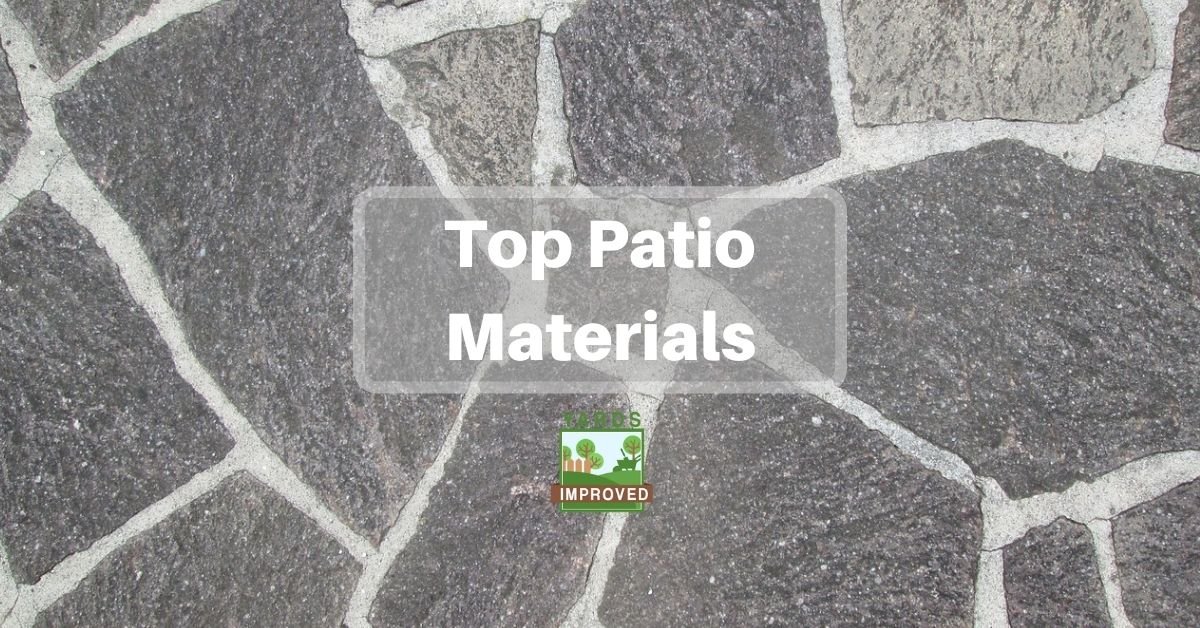When you’re ready to install a new patio, you want everything to be perfect. It should be the right size, the right shape, hold up for years, and be easy to maintain. It should be, after all, a fantastic place to enjoy your backyard!
Of course, one of the most important factors is what to make your patio out of. The material you choose will have a long-term effect on how you enjoy the patio. It’s not just about having something to stand on. It will bring its own aesthetics, its own feel. In short, it will help set the tone for your whole yard.
There are many materials available for a patio. We’ll touch on a few here and try to highlight their strengths and weaknesses. But we also know there are a lot of options we’re missing so don’t hold it against us!
Once you have your patio installed, be sure to decorate it, too!
Concrete Pavers
Concrete pavers are a fantastic option that looks great and is more economical than many alternatives. They are concrete squares (or other shapes) that are placed in the area you want covered. Each tile is placed individually. If necessary, they can be cut to fit areas where there isn’t space for a whole tile.
Pavers can be designed to look like other materials such as brick so you have a wide range of looks available.
They are usually installed on a layer of crushed stone. This helps keep them from cracking. However, you may get a firmer base if you have a layer of concrete underneath and mortar the pavers to the concrete.
One issue with pavers is that over time, they may slip a bit or become uneven, especially when laid on stone. This can make them susceptible to cracking, too. It may be necessary to take up a section and replace it.
Brick pavers are also available and have many of the same qualities as concrete in terms of price and durability.
Poured Concrete
Another alternative for a durable concrete surface is poured concrete. The concrete mix is mixed and molded on site. That means you have one large slab rather than individual sections.
Concrete holds up for years and doesn’t require much care. In fact, it’s usually sufficient to have it resealed every two to three years.
While it is subject to cracking, a competent contractor knows how to determine the likely spots that cracks will form. They place “contraction joints” in appropriate places to account for this.
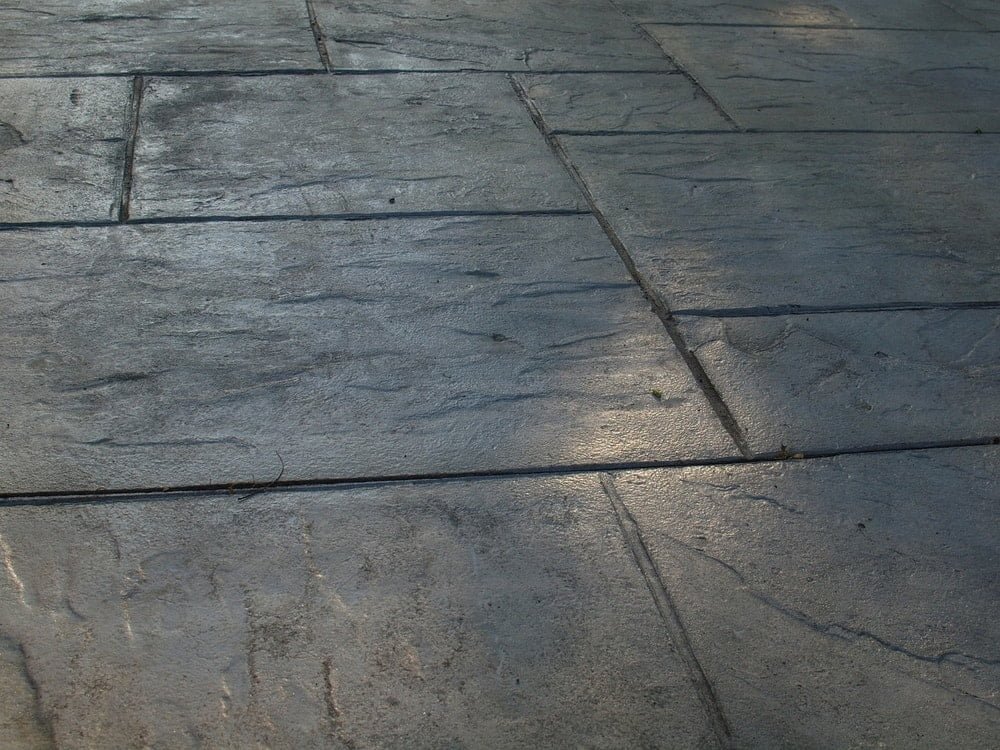
Concrete can be rather bland in its basic state and might be underwhelming for your patio. However, you can choose stamped concrete, which allows for a wide variety of designs. In this, it’s similar to pavers but it consists of a single slab rather than tiles. It’s likewise easy to maintain and will hold up for decades.
Stone
Of course, the two examples above are best when they imitate the appearance of another material. But the real thing is even better!
Natural stone holds up well and holds its color better than almost any other material. After all, it’s already been subjected to all that nature can throw at it!
Among the types of stone available are flagstone, slate, and limestone. These are all durable materials that will likely outlast the rest of your home.
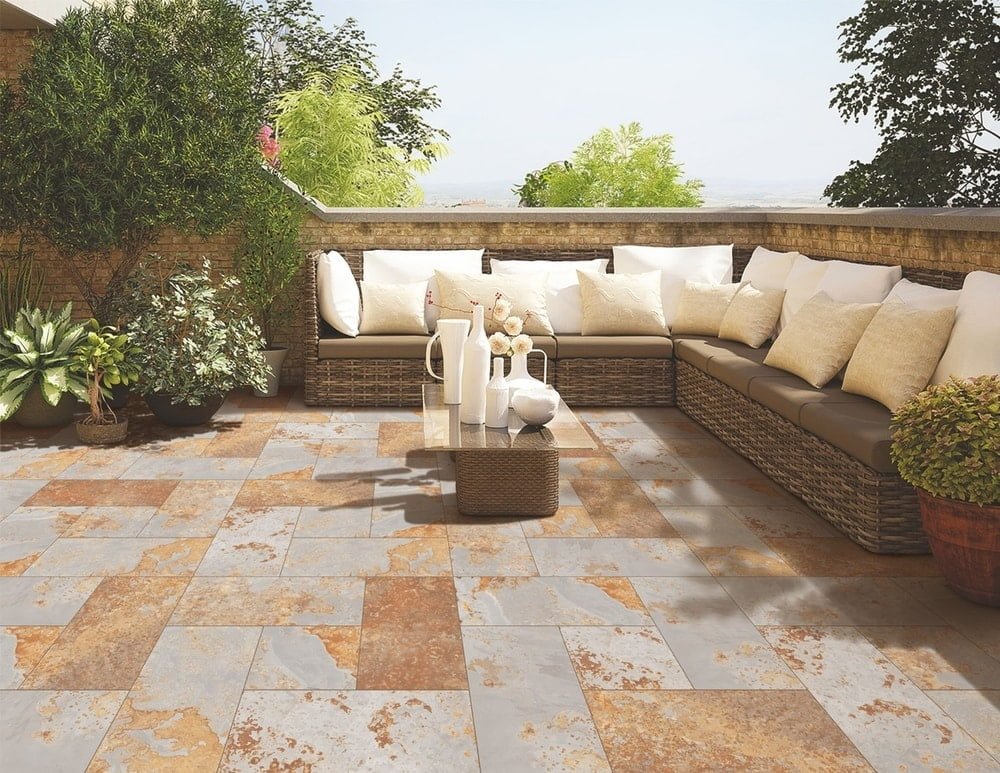
Even natural stone should still be sealed. The frequency of sealing it can depend on the type of stone since some are more porous than others. Other than that, you just have to sweep or hose it off.
The surface of many types of natural stone is irregular so it might not always be the easiest to walk on, especially if you like to wear heels or go barefoot. It can also be a bit tougher to remove snow from. It’s not a big problem, but it’s not as smooth as some other surfaces.
It’s also the most expensive option on our list. However, when you want the real thing and high dependability, it’s the way to go.
Tile
Another fine material is tile. Ceramic or porcelain tile has a finished look and a smooth surface that can make your patio stand out.
This may sound more like a bathroom feature, but there are also tiles designed for outdoor use. You want to be sure to choose ones that won’t absorb too much water. You also have to be careful because they tend to be slippery, especially if you choose glazed tiles.
Tile tends to be expensive. It can even come in with a higher price tag than natural stone at times.
Brick
Clay bricks are another traditional material for outdoor surfaces and for construction. Even though it’s given its name to a color (“Brick red”), it can actually come in a range of shades and colors, from tan to black. It also can be arranged in whatever pattern you can imagine; you’re not limited to making it look like a wall.
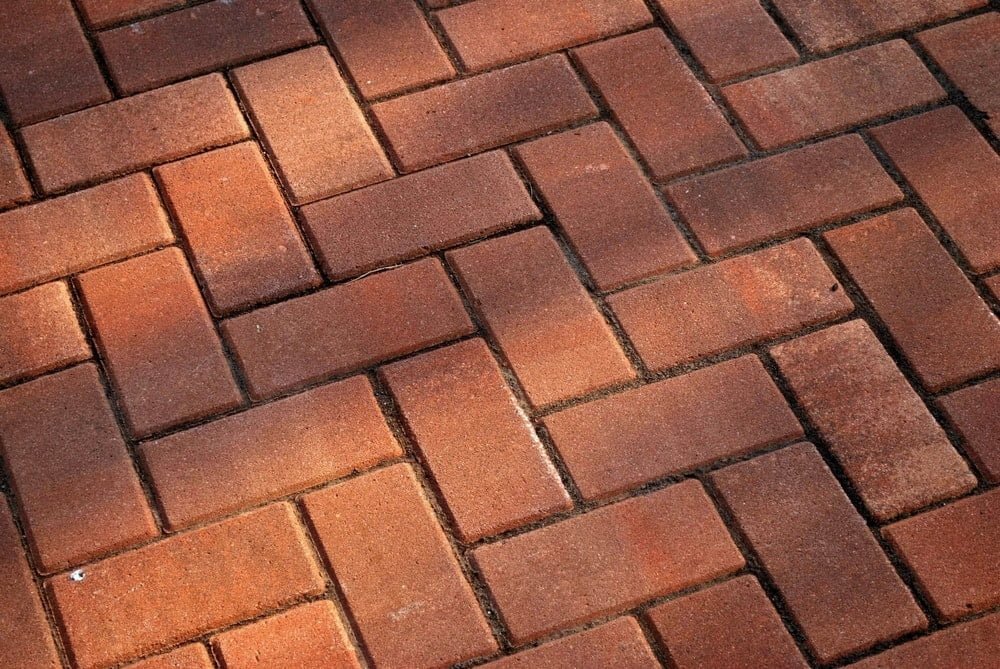
Brick is more economical than natural stone and has a long lifetime. One of the drawbacks, though, is that it can easily work loose or become uneven unless it is mortared into place. That can prevent a tripping hazard.
Brick is usually more expensive than concrete but more economical than tile or natural stone. Like most other surfaces, it does need to be sealed every couple of years.
Pea Gravel
Gravel can be a great surface for a patio and provides a unique, rustic feel. This is a softer surface since it consists of the tiny stones being poured into the area. It’s also the least expensive option on our list.
It’s best to lay gravel over a weed-resistant mesh or on top of heavier gravel and sand. Otherwise, you’ll have to pull weeds frequently.
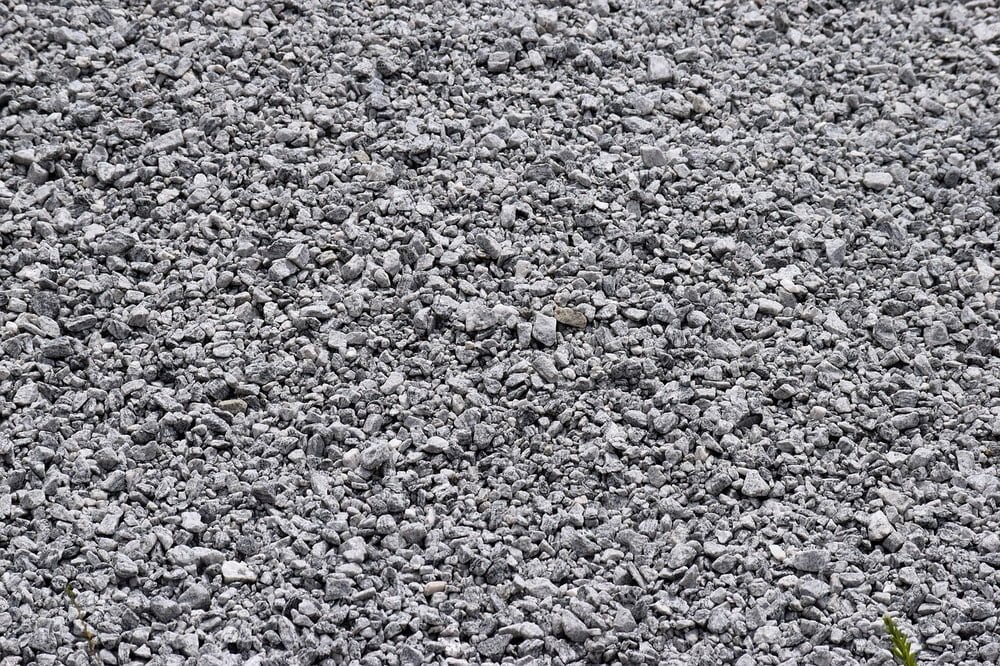
For many, walking on gravel can be relaxing, although it might be a bit rough on sensitive bare feet.
It can be tough to remove snow from this surface, however. In general, though, maintenance is easy. You simply have to rake it occasionally to restore it to a level surface. Even if it’s stained, you can rake or turn over the affected area with a shovel to mix in the discolored gravel.
Other Types of Tile and Pavers
There are a lot of other options, too. Tiles or pavers can be made of any suitable material. Marble or travertine are among the finest, and quartzite and vitrified tiles are also great options. They all offer beautiful and long-lasting services that will serve you well for years to come!
Conclusion
There are so many great options when it comes to choosing a material for your patio! Most have low maintenance requirements and long lifespans. That means your primary consideration can be how it looks! Go for the appearance you really want to make your patio the great and relaxing place you’ve always wanted.

